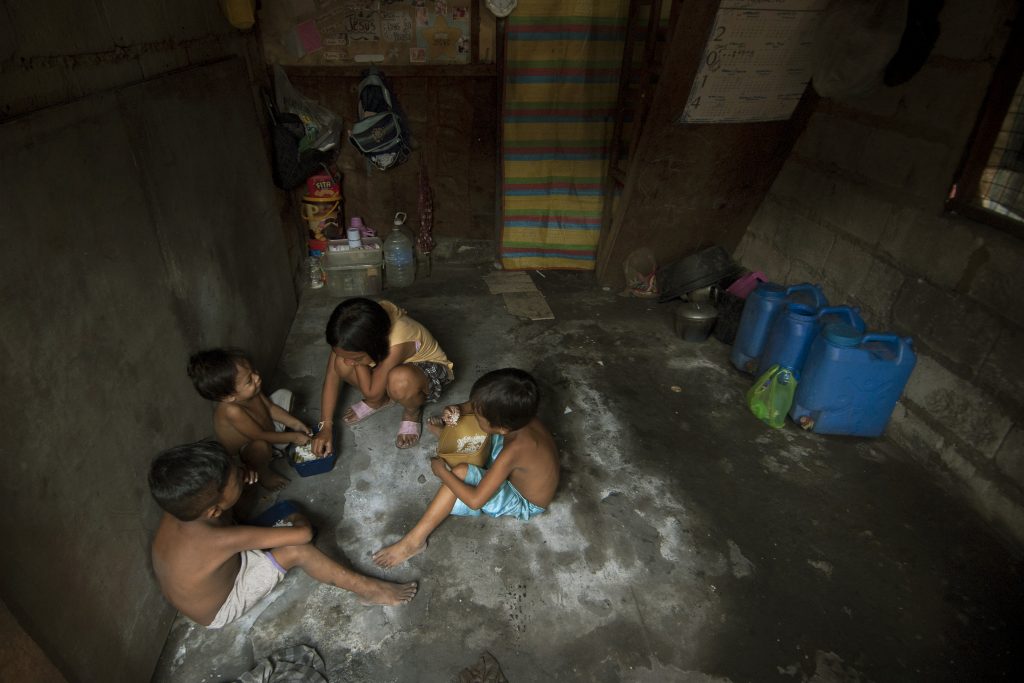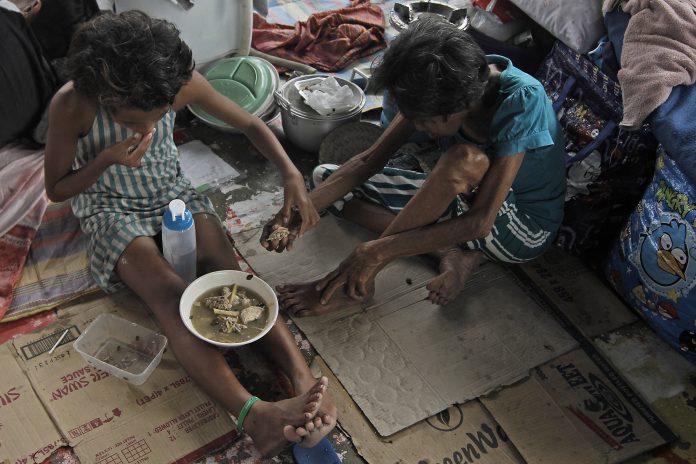The coronavirus pandemic has pushed more Filipinos into poverty, according to a report released by the Philippine Statistics Authority (PSA) on Friday, December 17.
The report said “poverty incidence,” or the proportion of poor Filipinos whose per capita income is not sufficient to meet their basic food and non-food needs, was at 23.7 percent during the first half of the year.
This translates to about 26.14 million Filipinos living below the poverty threshold estimated at PhP12,082 (US$242), on the average, for a family of five per month.
The PSA report also said that “subsistence incidence” among Filipinos, or the proportion of Filipinos whose income is not enough to meet even the basic food needs, was registered at 9.9 percent or about 10.94 million Filipinos.
On the average, the monthly food threshold for a family of five for the same period was estimated at PhP8,393 (US$168).
Among families, poverty incidence was estimated at 18.0 percent, which is equivalent to about 4.74 million poor families during the first half of the year.
“Subsistence incidence” among families was recorded at 7.1 percent, or about 1.87 million food poor families in the first semester of 2021.
National Statistician Claire Dennis Mapa said during a press conference that this was the first time since 2012 that first semester poverty incidence rose.
Under the medium-term plan, the government targets to slash the poverty rate to 14 percent by 2022.
Karl Kendrick Chua, head of the government’s socio-economic planning office, blamed the pandemic that he said “temporarily halted our progress” in reducing poverty.
He said people’s income and jobs were affected by “stringent quarantines.”
By region, the capital Manila had the lowest poverty incidence in the country at 7.8 percent in the first two quarters of 2021, albeit worse than 6.6% recorded in the first half of 2018.
The Bangsamoro Autonomous Region in Muslim Mindanao eked out the worst at 45.8% rate, but this was lower than 63.2% registered in the same period in 2018.

A survey done by pollster Social Weather Stations in September found adult joblessness at 24.8% of the adult labor force.
This is 2.8 points below the 27.6% in June 2021. It is 12.6 points below the record-high 37.4% average of 2020, but 5.0 points above the 19.8% average of 2019, before the COVID-19 pandemic.
The resulting 26.1% average for the first three quarters of 2021 is less than for 2020 but has not recovered to pre-pandemic levels.
The estimated numbers of jobless are 11.9 million in September 2021 and 13.5 million in June 2021.
SWS defines the Labor Force as adults (18 years and above) presently with a job plus those looking for a job. The Labor Force Participation Rate is the proportion of adults in the labor force.
The September 2021 survey found the Labor Force Participation Rate at 68.0%, or an estimated 48.2 million. It was 69.1%, or an estimated 48.9 million, in June 2021.
The jobless consist of those who (a) voluntarily left their old jobs, (b) are seeking jobs for the first time, or (c) lost their jobs due to economic circumstances beyond their control.
Joblessness reached a catastrophic level of 45.5% in July 2020. It eased to 39.5% in September 2020, 27.3% in November 2020, and 25.8% in May 2021. It bounced to 27.6% in June 2021 before easing to 24.8% in September 2021.









